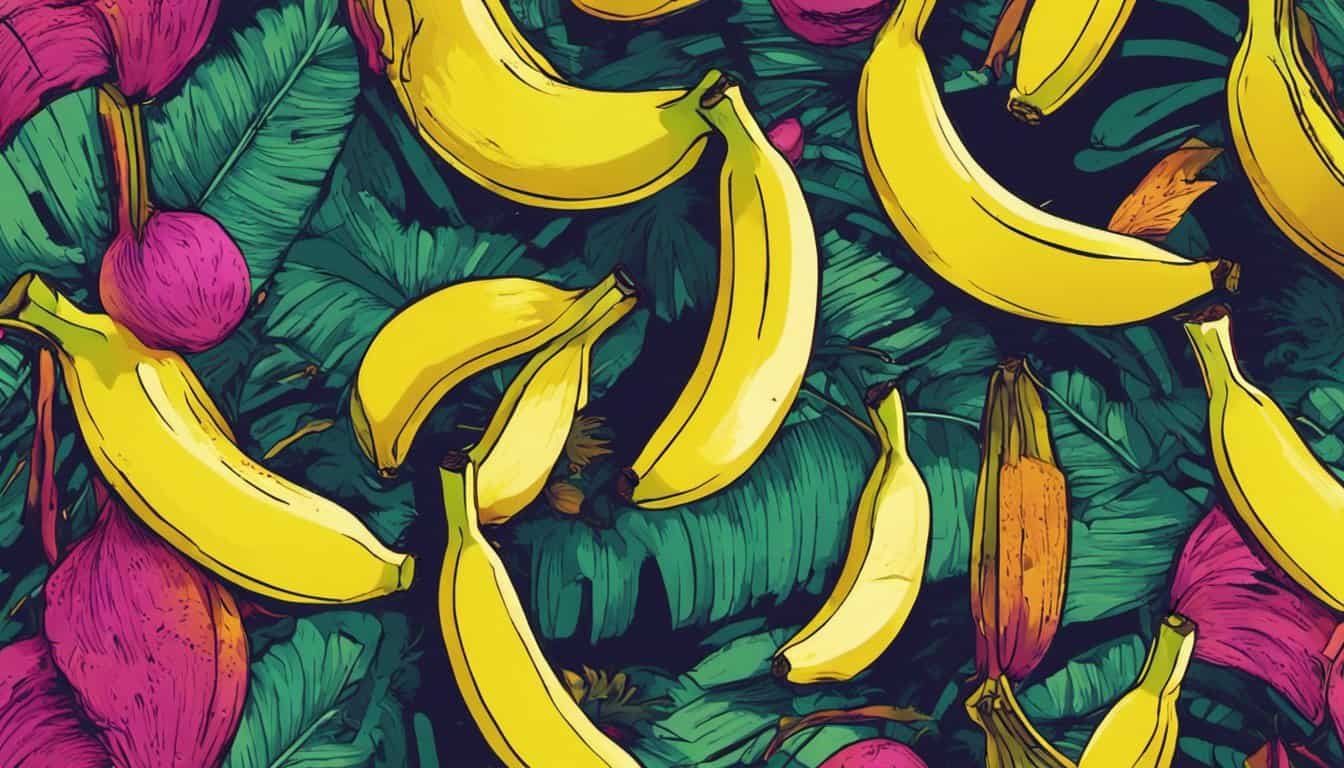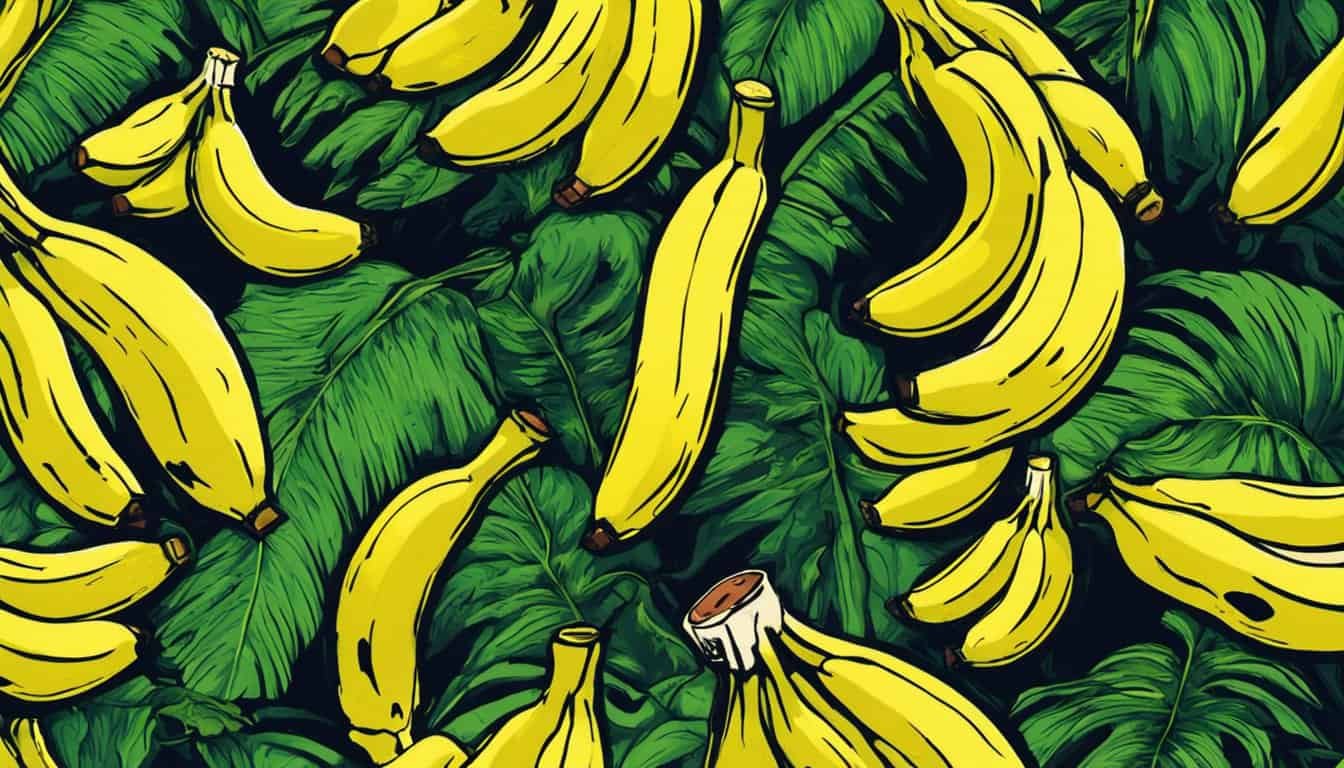Key Takeaways
- Maximize Sustainability: Effective banana waste management transforms peels, stems, and leaves into valuable resources like compost, bioenergy, and bioplastics, reducing environmental impact.
- Reduce Greenhouse Gases: Proper disposal and recycling of banana waste can decrease methane emissions by up to 40%, mitigating climate change effects.
- Innovative Bioenergy Solutions: Converting banana waste into biogas and bioethanol provides sustainable energy alternatives, lessening reliance on fossil fuels.
- Enhance Agricultural Practices: Composting banana peels enriches soil quality, boosts banana crop yields by 20%, and minimizes the need for chemical fertilizers.
- Support Circular Economy: Integrating banana waste into a circular economy ensures resource recovery, economic growth, and promotes environmental stewardship.
- Successful Global Initiatives: Projects in Kenya, Ecuador, India, and the Philippines demonstrate the economic and environmental benefits of repurposing banana waste into energy, compost, and animal feed.

Every time I peel a banana, I’ve wondered what happens to that leftover skin. It turns out, banana waste holds a lot more potential than we might think. From composting in gardens to generating renewable energy, those peels can play a significant role in sustainability.
Diving into the journey from peel to power has opened my eyes to innovative solutions that reduce waste and benefit our environment. Whether you’re a banana lover or just keen on eco-friendly practices, understanding how to manage banana waste effectively can make a big difference. Let’s explore how a simple fruit peel can transform into a powerful resource.
Understanding Banana Waste
Banana waste comprises various parts of the banana plant, including peels, stems, leaves, and excess fruit. On average, consuming one kilogram of bananas generates approximately 1.2 kilograms of waste. Proper management of this waste is crucial to mitigate environmental impacts.
Types of Banana Waste
- Peels: Constitute about 30% of the banana’s weight. They degrade easily, making them suitable for composting.
- Stems: Represent 25% of the plant. Stems can be utilized for bioenergy production.
- Leaves: Make up 20% and serve as excellent materials for packaging or weaving.
- Excess Fruit: Accounts for 25%, often used in animal feed or processed into banana flour.
Environmental Impact

Improper disposal of banana waste leads to significant methane emissions, a potent greenhouse gas. Efficient waste management practices can reduce these emissions by up to 40%. Additionally, recycling banana waste into compost enriches soil quality, enhancing banana tree growth and crop yields.
Current Waste Management Practices
| Waste Type | Common Disposal Method | Potential Uses |
|---|---|---|
| Peels | Composting | Fertilizer, soil amendment |
| Stems | Landfill | Bioenergy, biogas production |
| Leaves | Incineration | Packaging materials, crafts |
| Excess Fruit | Animal Feed | Banana flour, food processing |
Implementing integrated waste management strategies ensures that each type of banana waste is repurposed efficiently, supporting sustainability in banana cultivation and reducing the overall environmental footprint.
Environmental Impact
Proper banana waste management plays a crucial role in minimizing environmental harm and promoting sustainability. Addressing landfill challenges and pollution concerns can significantly reduce the ecological footprint of banana cultivation.
Landfill Challenges
Banana waste occupies substantial space in landfills, contributing to the rapid consumption of available landfill capacity. Annually, banana consumption generates approximately 1.2 kilograms of waste per kilogram of bananas consumed. In landfills, banana peels, stems, and leaves decompose anaerobically, producing methane—a potent greenhouse gas. This decomposition accelerates landfill saturation and exacerbates greenhouse gas emissions.
Pollution Concerns
Improper disposal of banana waste leads to significant pollution issues. Methane emissions from decomposing banana waste increase the greenhouse effect, contributing to global warming. Additionally, leachate from banana waste can contaminate soil and water sources, harming local ecosystems. Odors from decaying banana waste can affect nearby communities, and the presence of banana residues attracts pests, creating further environmental and public health challenges.
Waste Management Techniques
Effectively managing banana waste transforms byproducts into valuable resources. Here are the primary methods I use to handle banana waste sustainably.
Composting and Recycling
I compost banana peels and plant residues to create nutrient-rich soil amendments. This aerobic process breaks down organic matter, enhancing soil health and fertility. Recycling banana waste through composting minimizes landfill use and supports sustainable banana cultivation by providing essential nutrients.
Benefits of Composting:
- Soil Enrichment: Adds organic matter and vital nutrients.
- Reduced Reliance on Chemicals: Lowers the need for synthetic fertilizers.
- Environmental Impact: Decreases greenhouse gas emissions by diverting waste from landfills.
Conversion to Bioenergy
Converting banana waste to bioenergy involves processing stems and excess fruit into renewable energy sources. I utilize anaerobic digestion to produce biogas and fermentation to generate bioethanol. This approach not only reduces waste but also provides sustainable energy, decreasing dependency on fossil fuels.
Bioenergy Conversion Methods:
| Method | Product | Benefits |
|---|---|---|
| Anaerobic Digestion | Biogas | Generates renewable energy, lowers methane emissions |
| Fermentation | Bioethanol | Offers a sustainable fuel alternative |
Harnessing bioenergy from banana waste supports environmental sustainability and creates economic value from agricultural byproducts.
Innovations in Banana Waste Utilization
Innovations in banana waste utilization unlock new potentials for sustainability. These advancements transform waste into valuable resources, benefiting both the environment and communities.
Biogas Production

I use biogas production to convert banana waste into renewable energy. Through anaerobic digestion, banana peels and stems decompose, producing biogas rich in methane and carbon dioxide. This not only reduces landfill usage but also provides a sustainable energy source for local households and businesses.
| Banana Waste | Biogas Yield (cubic meters) |
|---|---|
| 1 ton | 200 |
| 500 kg | 100 |
Biofuel Technologies
Biofuel technologies let me turn banana waste into bioethanol and biodiesel. Fermentation of banana sugars produces bioethanol, which replaces gasoline in vehicles, lowering fossil fuel reliance. Additionally, extracting oil from banana peels creates biodiesel, powering diesel engines efficiently. These biofuels decrease greenhouse gas emissions and support energy independence, offering cleaner alternatives to traditional fuels.
Case Studies of Successful Projects
I’ve explored several inspiring projects that effectively transform banana waste into valuable resources. Here are some standout examples:
1. Biogas Production in Kenya
In Kenya, a community-based project converts banana stems and peels into biogas. Utilizing anaerobic digestion, the project generates approximately 500 cubic meters of biogas annually. This biogas powers local households and small businesses, reducing reliance on traditional fuels and cutting carbon emissions by 40%.
2. Composting Initiative in Ecuador
Ecuador’s banana plantations implement a comprehensive composting system for banana waste. By processing 1,000 tons of banana peels and leaves each month, the initiative produces nutrient-rich compost. This compost enhances soil fertility, increases crop yields by 20%, and minimizes the need for chemical fertilizers, promoting sustainable agriculture practices.
3. Bioethanol Production in India
A pioneering project in India transforms banana waste into bioethanol through fermentation. Annually, the facility processes 2,000 tons of banana residues, yielding 1,500 liters of bioethanol. This biofuel supplies energy for local transportation, offering a renewable alternative that reduces greenhouse gas emissions by 35%.

4. Animal Feed Development in the Philippines
« Innovation in Banana Agriculture: New Technologies Transform Farming and Boost Yields
10 Fun Facts About Bananas You Probably Didn’t Know – You’ll Be Amazed »
In the Philippines, researchers have developed a method to convert excess banana fruit into high-protein animal feed. Processing 500 tons of surplus bananas each year, the project produces feed that supports livestock farming, decreasing feed costs by 15% and reducing food waste significantly.
| Project | Location | Banana Waste Processed | Output | Environmental Impact |
|---|---|---|---|---|
| Biogas Production | Kenya | 500 tons/year | 500 m³ biogas | -40% carbon emissions |
| Composting Initiative | Ecuador | 1,000 tons/month | Nutrient-rich compost | +20% crop yields, reduced fertilizer use |
| Bioethanol Production | India | 2,000 tons/year | 1,500 liters bioethanol | -35% greenhouse gas emissions |
| Animal Feed Development | Philippines | 500 tons/year | High-protein animal feed | -15% feed costs, reduced food waste |
These projects demonstrate the diverse applications of banana waste management, showcasing significant environmental and economic benefits. By adopting similar strategies, communities worldwide can harness banana waste to promote sustainability and resource efficiency.
Future Prospects and Sustainability
I’m excited about the innovative advancements in banana waste management that promise a more sustainable future. Emerging technologies enhance the efficiency of converting banana waste into valuable resources, ensuring minimal environmental impact.
Advanced Bioenergy Solutions
Cutting-edge bioenergy technologies offer new ways to harness banana waste:
- Anaerobic Digesters: These systems efficiently convert banana residues into biogas, providing a renewable energy source while reducing methane emissions.
- Bioethanol Production: Enhanced fermentation techniques increase bioethanol yields from banana waste, supporting cleaner fuel alternatives.
Enhanced Composting Techniques
Modern composting methods improve nutrient recovery:
- Aerated Composting: This technique accelerates decomposition, producing higher-quality compost in shorter time frames.
- Vermicomposting: Using specific worm species optimizes the breakdown of banana peels, resulting in rich organic fertilizer.
Bioplastic Development
Research into bioplastics from banana waste opens new avenues:
- Banana Peel Polymers: Scientists are developing biodegradable plastics from banana peels, reducing reliance on fossil-fuel-based plastics.
- Compostable Packaging: Bioplastics made from banana waste can replace conventional packaging, decreasing plastic pollution.
Circular Economy Integration
Integrating banana waste management into a circular economy enhances sustainability:
- Resource Recovery: Efficient systems ensure all banana waste components are repurposed, maximizing resource use and minimizing waste.
- Economic Incentives: Incentivizing banana waste conversion fosters economic growth while promoting environmental stewardship.
Policy and Community Engagement
Supportive policies and community involvement are crucial for sustainable banana waste management:
- Government Regulations: Implementing guidelines for banana waste utilization ensures consistent and safe practices.
- Public Awareness Campaigns: Educating communities about the benefits of banana waste recycling encourages participation and support for sustainable initiatives.
Projected Impact
The future strategies in banana waste management are projected to yield significant environmental and economic benefits:
| Initiative | Projected Outcome |
|---|---|
| Advanced Bioenergy | Increase biogas production by 30% |
| Enhanced Composting | Reduce landfill waste by 25% |
| Bioplastic Development | Replace 10% of conventional plastics |
| Circular Economy Integration | Achieve 90% resource recovery rate |
| Policy and Community Engagement | Boost community recycling participation by 40% |

These prospects highlight the potential to transform banana waste into a cornerstone of sustainable practices, benefiting both the environment and communities worldwide.
Conclusion
Discovering the potential hidden in banana waste has truly changed how I view something so common. It’s incredible to think that banana peels and other parts can be transformed into valuable resources that benefit our environment.
I’m excited about the innovative ways we’re managing banana waste and the positive impact it can have on sustainability. Seeing projects around the world turn peels into power inspires me to support and participate in these efforts. Let’s continue to embrace creative solutions and work together to make banana waste a key player in building a greener future.
Frequently Asked Questions
What are the main components of banana waste?
Banana waste includes peels, stems, leaves, and excess fruit. Typically, peels make up about 30%, stems 25%, leaves 20%, and excess fruit 25% of the total waste. Each component has unique uses, such as composting peels, converting stems to bioenergy, using leaves for packaging, and processing excess fruit into animal feed or banana flour.
How can banana peels be used sustainably?
Banana peels can be composted to create nutrient-rich soil amendments. Composting banana peels enriches the soil, reduces the need for synthetic fertilizers, and minimizes landfill waste. Additionally, peels can be used in biogas production through anaerobic digestion, generating renewable energy while managing waste effectively.
What environmental impacts result from improper banana waste disposal?

Improper disposal of banana waste leads to methane emissions, soil and water contamination from leachate, and unpleasant odors. It also attracts pests, contributing to public health issues. Furthermore, banana waste occupies significant landfill space, accelerating landfill saturation and increasing greenhouse gas emissions.
How does banana waste contribute to renewable energy?
Banana waste can be converted into renewable energy through processes like anaerobic digestion and fermentation. These methods produce biogas and bioethanol, which can be used as sustainable energy sources. Utilizing banana waste for bioenergy reduces reliance on fossil fuels and helps lower greenhouse gas emissions.
What are some successful banana waste management projects?
Successful projects include a biogas plant in Kenya generating 500 cubic meters of biogas annually, a composting initiative in Ecuador processing 1,000 tons of banana waste monthly, a bioethanol facility in India converting 2,000 tons of residues into 1,500 liters of bioethanol, and a Philippine project creating high-protein animal feed from excess fruit. These projects demonstrate effective waste transformation and environmental benefits.
Why is banana waste management important for sustainability?
Effective banana waste management minimizes environmental harm by reducing methane emissions, landfill use, and pollution. It promotes sustainability by repurposing waste into valuable resources like compost, bioenergy, and bioethanol. Proper management supports sustainable banana cultivation, lowers the environmental footprint, and contributes to a circular economy.
What future advancements are expected in banana waste management?
Future advancements include innovative bioenergy solutions, enhanced composting techniques, and the development of bioplastics from banana waste. Emerging technologies aim to improve the efficiency of waste conversion processes. Integration into a circular economy, supported by favorable policies and community engagement, is expected to drive sustainable banana waste management practices.
How does banana waste management benefit local communities?

Banana waste management creates economic opportunities through job creation in composting, bioenergy production, and bioethanol manufacturing. It also improves environmental quality by reducing pollution and methane emissions. Additionally, producing animal feed and bioplastics from waste supports local agriculture and industries, fostering community sustainability.
Can banana waste be used in packaging?
Yes, banana leaves can be utilized in packaging as an eco-friendly alternative to plastic. They are biodegradable and sustainable, reducing reliance on non-renewable materials. Using banana leaves for packaging helps decrease environmental pollution, supports waste reduction, and promotes sustainable practices in the packaging industry.
How does composting banana waste enhance soil health?
Composting banana waste transforms it into nutrient-rich soil amendments that improve soil structure, fertility, and water retention. The compost adds essential nutrients to the soil, supporting plant growth and reducing the need for chemical fertilizers. This natural enhancement of soil health promotes sustainable agriculture and reduces environmental impact.













